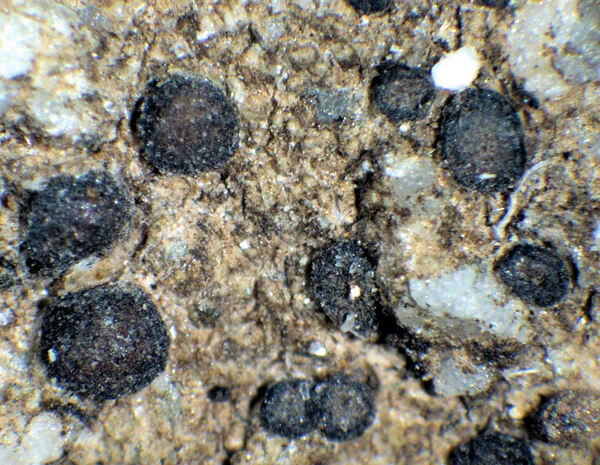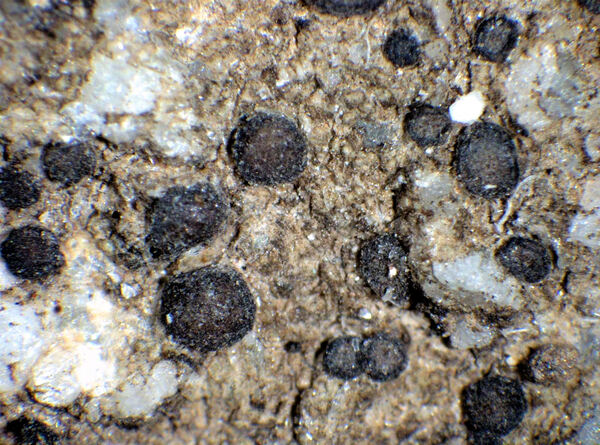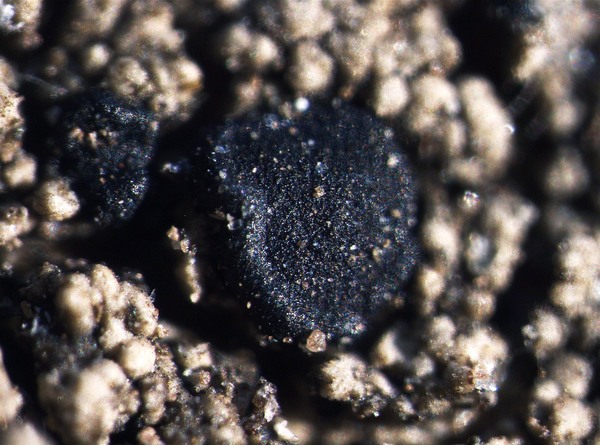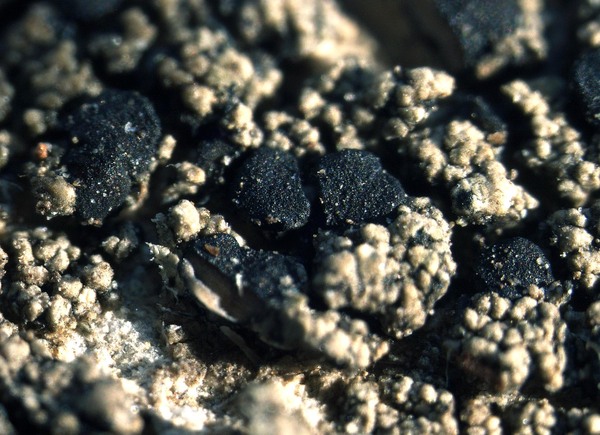Lecidella viridans (Flot.) Körb.
Syst. Lich. Germ.: 242, 1855. Basionym: Lecidea sabuletorum var. viridans Flot. - Flora, 11: 697-698, 1828.
Synonyms: Biatora viridans (Flot.) Hepp; Lecidea elaeochromiza (Nyl.) H. Olivier; Lecidea glomerulosa (DC.) Steud. f. elaeochromiza (Nyl.) Zahlbr.; Lecidea viridans (Flot.) Lamy; Lecidella elaeochromiza (Nyl.) M. Choisy
Distribution: N - Frl (TSB 14171), Ven, TAA (Knoph & Leuckert 2000), Lomb, Piem (Isocrono & al. 2004), Lig (Watson 2014). C - Tosc, Sar. S - Camp, Si (Grillo 1998, Grillo & Caniglia 2004).
Description: Thallus crustose, episubstratic, granulose or minutely verrucose, 0.1-0.3 mm thick, yellowish white to greenish yellow, rarely delimited by a dark prothallus. Cortex up to 25 µm thick, patchily overlain by an epinecral layer, sometimes strongly filled with crystals; medulla white I-. Apothecia lecideine, black, sessile and constricted at base, 0.2-0.4(-0.5) mm across, with a flat to finally convex, epruinose disc, and a thin, often grey-green-pruinose, finally often excluded proper margin. Proper exciple thin (up to 75 µm thick laterally), brown to grey-green in outer part, colourless to very pale brown within, without crystals; epithecium grey-green, olive-green or brown, with granular crystals dissolving in K, 5-10 µm high; hymenium colourless, not inspersed with oil droplets, 50-65 µm high; paraphyses easily made free in K, simple, rarely branched and anastomosing, 1,5-2 µm thick at mid-level, the apical cells up to 4.5 µm wide; hypothecium colourless to very pale brown in old apothecia, not filled with crystals, K-. Asci 8-spored, clavate, with an intensely K/I+ blue tholus penetrated by a faintly amyloid, broadly cylindrical axial mass, and a poorly developed ocular chamber, the wall K/I-, surrounded by a K/I+ blue outer layer, approaching the Lecanora-type. Ascospores 1-celled, hyaline, ellipsoid, 9-13 x 5-7 µm, thick-walled. Photobiont chlorococcoid. Spot tests: K-, C+ orange, KC+ orange, P-. Chemistry: 4,5-dichloronorlichexanthone, arthothelin, isoarthothelin, and thiophanic acid, plus traces of thuringione.Note: on base-rich or slightly calciferous siliceous rocks, especially on steeply inclined faces, in dry-warm areas.
Growth form: Crustose
Substrata: rocks
Photobiont: green algae other than Trentepohlia
Reproductive strategy: mainly sexual
Subcontinental: restricted to areas with a dry-subcontinental climate (e.g. dry Alpine valleys, parts of Mediterranean Italy)
Commonnes-rarity: (info)
Alpine belt: absent
Subalpine belt: absent
Oromediterranean belt: absent
Montane belt: extremely rare
Submediterranean belt: extremely rare
Padanian area: absent
Humid submediterranean belt: extremely rare
Humid mediterranean belt: absent
Dry mediterranean belt: extremely rare
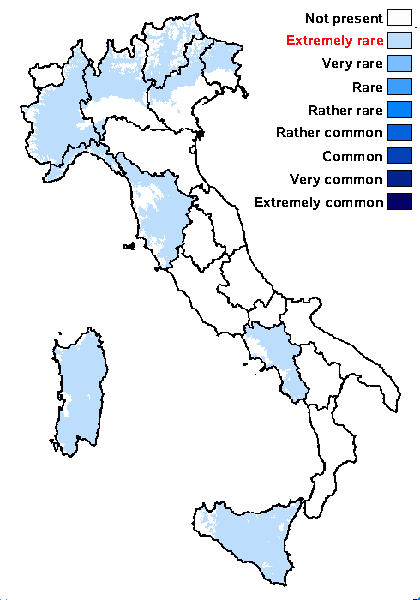
Predictive model
Herbarium samples
Growth form: Crustose
Substrata: rocks
Photobiont: green algae other than Trentepohlia
Reproductive strategy: mainly sexual
Subcontinental: restricted to areas with a dry-subcontinental climate (e.g. dry Alpine valleys, parts of Mediterranean Italy)
Commonnes-rarity: (info)
Alpine belt: absent
Subalpine belt: absent
Oromediterranean belt: absent
Montane belt: extremely rare
Submediterranean belt: extremely rare
Padanian area: absent
Humid submediterranean belt: extremely rare
Humid mediterranean belt: absent
Dry mediterranean belt: extremely rare

Predictive model
| Herbarium samples |
 Index Fungorum
Index Fungorum
 GBIF
GBIF
